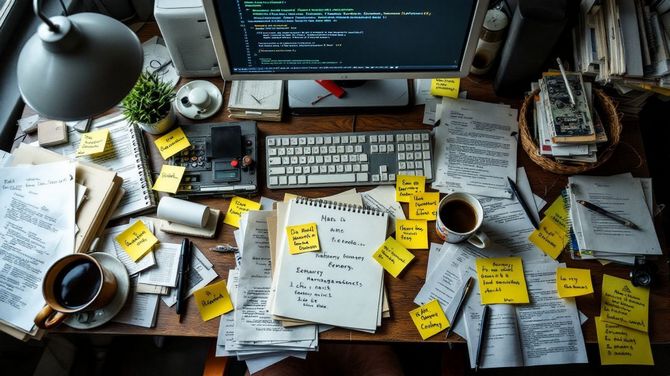The Role of C and C++ in Game Development

Making games is hard. You need to think about stories, art, and how the game feels. But one big challenge is making sure the game runs fast and looks good. That’s where C++ comes in. This language helps make games run smoothly on different devices like computers and game consoles. C++ is a key tool for making video games today. It lets you control how the computer’s memory works very closely. This means your game can do a lot without getting slow or crashing. Our blog will show you why C++ is so important for creating everything from small indie games to big hits for PlayStation or Xbox. Ready to see how? Keep reading! Core Uses of C++ in Modern Game Development C++ is a go-to language for making video games today. It lets developers build big, fast games and game parts that players love. Game Engine Development Game engines are the backbone of video games. They handle everything from graphics to game rules. C++ plays a big role here. Unreal Engine and Unity use C++ for making games run fast and look good. This language helps make changes quickly, which is key in game making. ID Software’s choice to rewrite their IdTech 4 for Doom 3 in C++ shows its power. This move made the game better in many ways. Game makers choose C++ because it works well with high-performance parts of a game like graphics and gameplay mechanics. It fits right into creating complex gaming engines that players love. Performance Optimization C++ lets game developers control how a computer uses its parts. This helps games run fast. By handling memory themselves, they make sure the game does not slow down or stop. Modern computers and gaming systems work better with C++. They match well with how C++ tells them to move data around. Using C++, creators can tell a game exactly what to do at each moment. This makes sure that every jump, race, or battle looks smooth and feels real. For high-performance games, this is key. With tools like Visual Studio and LLVM, testing and improving these details are easier for developers. Real-time Simulation Real-time simulation in C++ makes games react fast. This means when you play, the game responds right away. It’s like how in real life, if you throw a ball, it moves at that moment. Games do this with graphics and physics to make everything look and feel more real. This is big for action and sports games where timing matters a lot. C++ helps make online play smooth too. In multiplayer games, players from all over can join one world. The game uses C++ to keep everyone’s actions in sync. So, if you’re racing cars or battling monsters together, it feels fair and fun for everyone playing. C++ and Graphics in Gaming In games, C++ makes the pictures and scenes look real and smooth. It helps game makers control how a game shows images on the screen. Rendering Techniques C++ makes games look real and cool. It lets game makers create their own ways to show images and scenes in games. This is key for making each game unique. Games need C++ to run fast and look good at the same time. Think of how a racing game needs both speed and sharp pictures. That’s where C++ steps in. Game developers use C++ for managing how a game draws pictures on your screen, step by step. This process uses something called graphics pipelines, which are like instructions telling the computer what to show you next. Thanks to C++, these pipelines work fast, letting you see smooth movements in your favorite games without waiting. Managing Graphics Pipelines C++ helps game developers take control of graphics pipelines. This means they can make games look better and run smoother. With C++, they use advanced rendering for VR (virtual reality) and AR (augmented reality). These techniques make games feel more real. Developers optimize how a game performs using C++. They adjust how fast a game draws its pictures. This is key for action-packed or detailed virtual worlds where every second counts. By managing graphics well, games impress players with their speed and beauty. Networking and Multiplayer Features with C++ C++ makes online games work together smoothly. It helps sync up player actions and manage big online game worlds. Synchronization of Game States C++ is key in keeping game states in sync for multiplayer games. This means that what one player does shows up on all other players’ screens without delay. It uses real-time processing to make this happen fast. Plus, it’s good at managing resources, so games run smoothly. This programming language makes sure everyone playing together sees the same world at the same time. Imagine a game where players don’t see things the same way – it wouldn’t be fun. C++ stops that from happening by keeping everything in order. Handling Massive Multiplayer Online (MMO) Environments C++ plays a big role in MMO games. These games need C++ to connect many players online at once. This programming language helps make sure the game runs smooth. It handles lots of data and player actions without slowing down. With C++, developers can make huge worlds that many people can play in together. MMO games also need good networking. C++ supports this by syncing game states across computers fast. This means that what one player does in the game shows up quickly for everyone else, no matter where they are. Thanks to C++, games can grow big while still being fun and fair for all players. C++ in Game Development Frameworks C++ takes the lead in game-making tools like Unreal Engine and Unity. These tools let developers add their own C++ plugins to make games better. Unreal Engine Unreal Engine makes games look amazing. It uses C++ for scripting. This means it can create beautiful graphics and game play that feels real. Thanks to C++,
Mastering Memory Management in C and C++

Managing memory in C and C++ can be tricky. You might face crashes or slow programs because of bad memory usage. Good news – mastering advanced techniques can fix these problems. One cool fact is that modern C++ has tools to make managing memory easier and your programs faster. This blog will cover those new tricks, from dynamic allocation to smart pointers. Get ready to boost your code with our tips! Keep reading to learn how. Dynamic Memory Allocation in C++ In C++, we use dynamic memory to make programs more flexible. We can create variables while the program is running and remove them when we don’t need them anymore. This way, your computer doesn’t run out of space quickly. To do this, C++ has tools like “new” for making things and “delete” for cleaning up. It’s like having a magic wand that lets you control exactly how much memory your software uses. New Operator Usage Managing memory in computer programs is crucial. The New operator in C++ makes this easier. Here’s how: Use the New operator to create space for an object in heap memory. This space holds data later. This operator does more than just allocate space; it also calls the constructor of a class, setting up the object. If there is not enough memory, New throws an exception. This helps prevent your program from crashing. Unlike malloc() in C, you don’t need to say what type of data you are creating space for with New. It figures it out on its own and sizes everything right. You can also use New for creating arrays in heap memory, making it flexible for different needs. Using the New operator helps manage memory better in C++ programs by simplifying creation and setup of objects and handling errors more smoothly. Delete Operator Usage Deleting objects correctly is key to preventing memory leaks in C++. Memory leaks happen when programs don’t free up memory that is no longer needed. Here’s how to use the delete operator right: Use delete to remove a single object created with new. This frees up the space. For an array, use delete[] instead. It clears all items in the array. Pair every new with a delete. If you create with new, always erase with delete. Pay attention to pointers. After deleting, set your pointer to nullptr. This stops wild pointers. Be careful with shared resources. Make sure you only delete what you truly own. Understand ownership rules in your codebase for safe deletes without double freeing or skipping necessary cleans up. Regularly check for memory leaks during testing phases. Learn how smart pointers like std::unique_ptr can manage deletes for you automatically, making manual deletes less needed. Following these steps helps keep your program free from memory leaks and errors related to incorrect deletion of dynamically allocated memory. Memory Management in C In C, managing memory is like handling raw ingredients in a kitchen. You use tools like malloc to measure out exactly how much space you need. Then, when you’re done, you clean up with free to make sure there’s no waste left behind. Malloc Function Utilizing Malloc in C is an essential component of manual memory control. It facilitates securing a certain quantity of computer memory for your application. Malloc is an abbreviation for memory allocation. This function requests memory of a particular size that you define. You must specify the quantity of memory needed, quantified in bytes. The sizeof operator, combined with data types or structs, is typically used to determine the size. If sufficient space is accessible, Malloc allocates a pointer initiating that segment. This pointer enables your application to identify the starting point of its allocated memory. If Malloc fails to locate sufficient free space, it generates a null pointer. A null pointer indicates that your memory request was unsuccessful – there wasn’t sufficient free memory. It is important to verify if the pointer isn’t null before utilizing the memory to avoid errors. The type of pointer generated by Malloc is void*. Hence, you must change it to the correct pointer type you’re dealing with. This type conversion is performed with typecasting in C. For instance, if an array of integers is needed, you cast it like so: (int*). It’s crucial to release this space post usage – that’s when the free function becomes useful. Utilizing Malloc and manually controlling memory can initially seem challenging, but mastering it leads to superior control over how your C programs operate and utilize resources. Free Function Releasing memory is essential in C programming. The free function allows us to manage this by eliminating space that is no longer required. Implement the free function post malloc: It’s essential to invoke free() corresponding to every memory segment acquired with malloc(). This serves to avoid memory leaks. Post-free, pointer becomes null: On utilizing free(), your pointer variable doesn’t retain the memory location anymore. It’s recommended to assign your pointer to NULL post-freeing it to prevent inadvertent usage. Inappropriate use leads to errors: Attempting to free an area not allocated with malloc or already freed can lead to your program crashing or behaving unpredictably. Double freeing leads to issues: Freeing a pointer variable twice results in undefined behavior, frequently leading to difficult-to-trace errors. Memory leaks occur in absence of free: Failing to use free() results in your program retaining memory even when it’s unnecessary, potentially causing system slowdowns or crashes over time. Dynamic arrays also require freeing: On dynamically creating an array using malloc, ensure to release it with free() once done to maintain clean and available memory. Free is compatible with calloc and realloc too: Similar to malloc, if you’ve implemented calloc or realloc, make sure to utilize free() for clean up. Pre-freeing inspection: It’s wise to check if your pointer is not NULL pre-invoking free(). This prevents attempts to free something that’s not allocated, potentially causing issues. Steer clear of dangling pointers: Post-freeing memory, if any other pointers were indicating that



